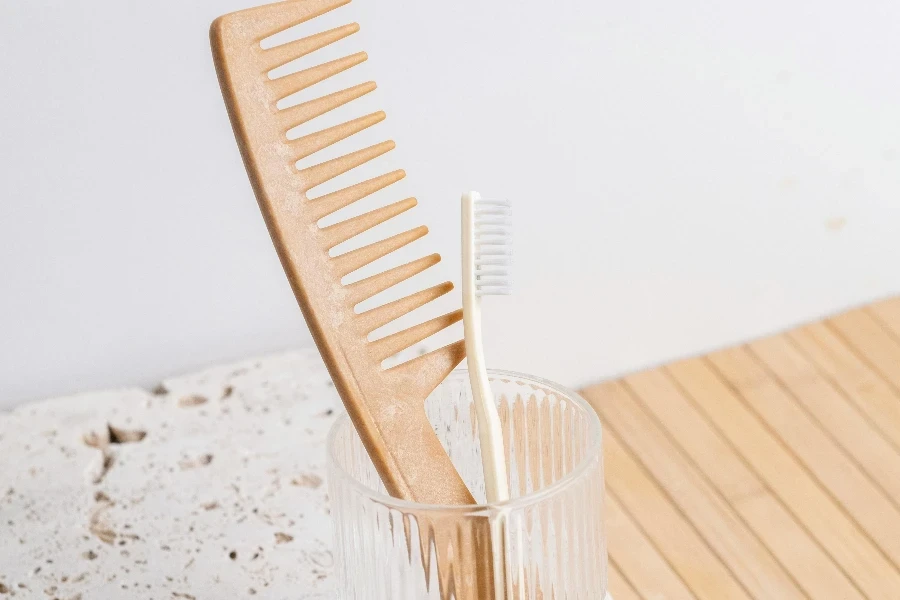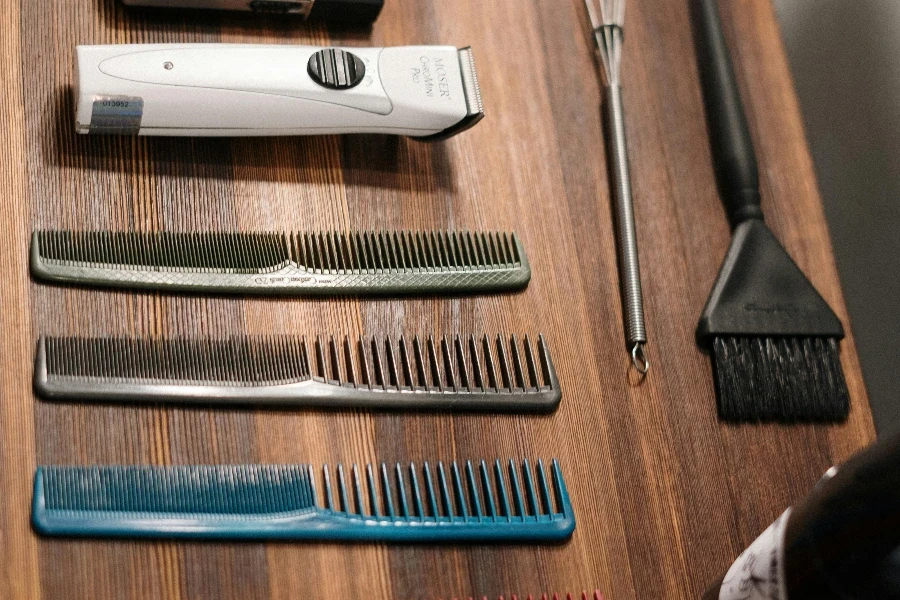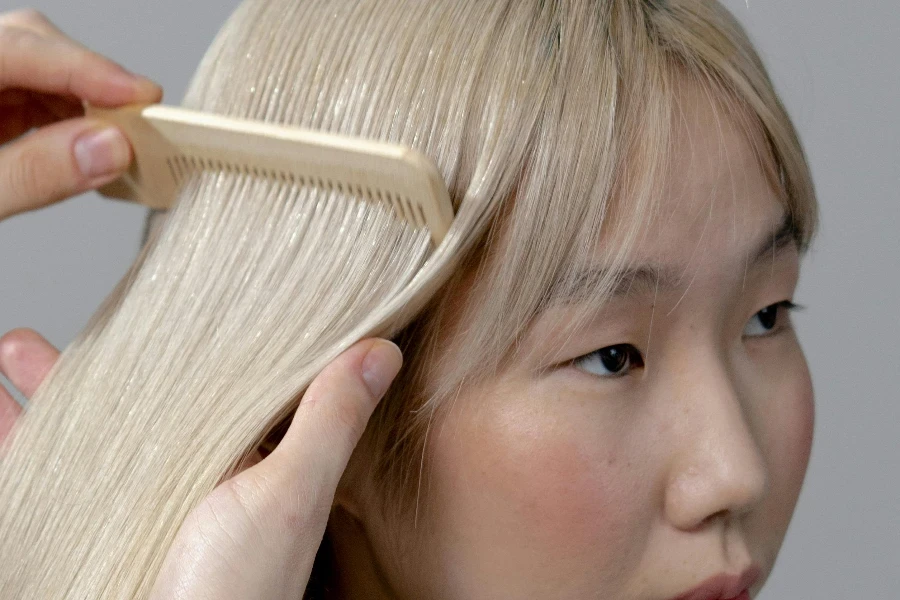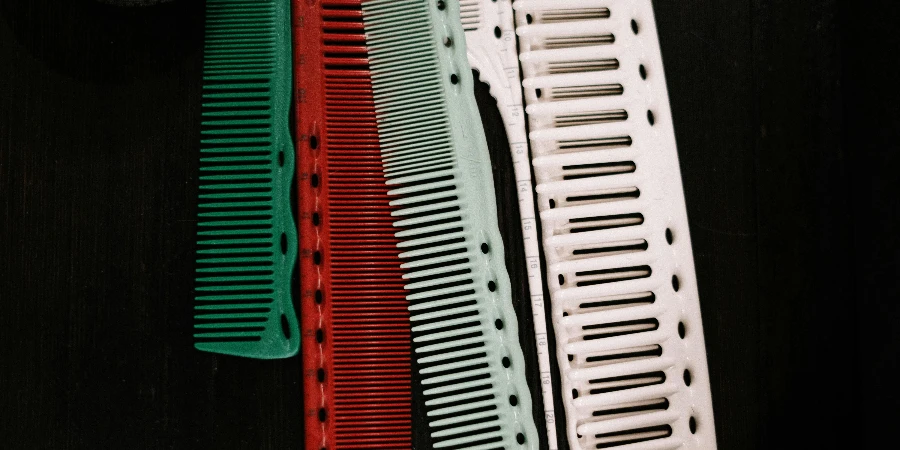In the ever-evolving world of beauty and personal care, the fine tooth comb has emerged as a staple tool, gaining significant traction among consumers and professionals alike. As we delve into 2025, the market for fine tooth combs is witnessing remarkable growth, driven by increasing awareness of hair care and grooming. This article explores the definition of fine tooth combs and their burgeoning market potential, highlighting key trends and demand growth.
Table of Contents:
Exploring the Fine Tooth Comb: Definition and Market Potential
Diverse Types of Fine Tooth Combs: Pros, Cons, and Consumer Insights
Addressing Consumer Pain Points: Solutions and Innovations
Key Considerations for Sourcing Fine Tooth Combs
Wrapping Up: The Future of Fine Tooth Combs in the Beauty Industry
Exploring the Fine Tooth Comb: Definition and Market Potential

Understanding the Fine Tooth Comb: A Brief Overview
A fine tooth comb is a grooming tool characterized by its closely spaced teeth, designed to detangle hair, remove lice, and style with precision. These combs are typically made from materials such as plastic, metal, or wood, and are favored for their ability to provide meticulous control over hair styling. The fine tooth comb is particularly popular in the beauty industry for its versatility in creating sleek hairstyles and ensuring even distribution of hair products.
Market Potential: Trends and Demand Growth
The market potential for fine tooth combs in 2025 is substantial, driven by several key factors. According to recent industry reports, the global beauty and personal care market is experiencing robust growth, with a notable increase in consumer spending on grooming products. This trend is reflected in the rising demand for fine tooth combs, which are essential tools for both personal and professional use.
One of the primary drivers of this market growth is the increasing awareness of hair health and hygiene. Consumers are becoming more conscious of the importance of using the right tools to maintain their hair, leading to a surge in demand for high-quality fine tooth combs. Additionally, the growing popularity of social media platforms has amplified the influence of beauty influencers and hairstylists, who often showcase the benefits of using fine tooth combs in their tutorials and reviews. Hashtags such as #HairCareRoutine and #GroomingEssentials are trending, further boosting the visibility and desirability of these combs.
Moreover, the fine tooth comb market is benefiting from the broader trend of sustainable and eco-friendly products. Many manufacturers are now offering combs made from biodegradable materials, catering to the environmentally conscious consumer. This shift towards sustainability is not only enhancing the appeal of fine tooth combs but also aligning with the global movement towards greener beauty practices.
In terms of regional demand, North America and Europe are leading the market, driven by high consumer awareness and disposable incomes. However, the Asia-Pacific region is expected to witness the fastest growth, fueled by a burgeoning middle class and increasing urbanization. Countries like China and India are emerging as significant markets for fine tooth combs, with a growing number of consumers seeking premium grooming products.
In conclusion, the fine tooth comb market in 2025 is poised for significant growth, supported by rising consumer awareness, social media influence, and the shift towards sustainable products. As the beauty and personal care industry continues to evolve, fine tooth combs are set to remain an essential tool for both everyday grooming and professional hairstyling.
Diverse Types of Fine Tooth Combs: Pros, Cons, and Consumer Insights

Plastic Fine Tooth Combs: Affordable and Versatile
Plastic fine tooth combs are a staple in the beauty and personal care industry due to their affordability and versatility. These combs are typically made from durable plastic materials such as ABS or polypropylene, which are known for their strength and flexibility. One of the primary advantages of plastic combs is their cost-effectiveness, making them an attractive option for retailers and wholesalers looking to offer budget-friendly products to their customers.
However, plastic combs are not without their drawbacks. They can generate static electricity, which may lead to frizz and flyaways, particularly in dry or cold climates. Additionally, while plastic combs are durable, they are not as environmentally friendly as their wooden counterparts. Despite these cons, plastic combs remain popular due to their wide range of colors, designs, and sizes, catering to various consumer preferences.
Metal Fine Tooth Combs: Durability and Precision
Metal fine tooth combs are prized for their durability and precision. Made from materials such as stainless steel or aluminum, these combs are resistant to bending and breaking, making them a long-lasting investment for consumers. Metal combs are particularly favored by professional hairstylists for their ability to provide precise and even parting, which is essential for intricate hairstyles and treatments.
The primary disadvantage of metal combs is their weight, which can make them less comfortable to use for extended periods. Additionally, metal combs can sometimes have sharp edges that may cause discomfort or damage to the scalp if not properly manufactured. Despite these potential issues, the durability and precision offered by metal combs make them a valuable tool in both professional and personal hair care routines.
Wooden Fine Tooth Combs: Eco-Friendly and Gentle on Hair
Wooden fine tooth combs are gaining popularity due to their eco-friendly nature and gentle treatment of hair. These combs are typically made from sustainable materials such as bamboo or sandalwood, which are biodegradable and reduce the environmental impact. Wooden combs are known for their ability to distribute natural oils from the scalp throughout the hair, promoting healthier and shinier locks.
One of the main advantages of wooden combs is their anti-static properties, which help to reduce frizz and flyaways. They are also gentle on the scalp, making them suitable for individuals with sensitive skin or scalp conditions. However, wooden combs require more maintenance than plastic or metal combs, as they need to be kept dry and occasionally oiled to prevent cracking and splintering. Despite these maintenance requirements, the benefits of wooden combs make them a preferred choice for eco-conscious consumers.
Addressing Consumer Pain Points: Solutions and Innovations

Common Issues with Fine Tooth Combs and How to Overcome Them
Consumers often face several common issues with fine tooth combs, including static electricity, breakage, and discomfort during use. Static electricity is a significant concern, particularly with plastic combs, as it can lead to frizz and flyaways. To address this issue, manufacturers are incorporating anti-static materials and coatings into their comb designs. For example, some plastic combs are now infused with carbon or ceramic to reduce static buildup.
Breakage is another common problem, especially with lower-quality plastic combs. To overcome this, consumers are encouraged to invest in combs made from more durable materials such as metal or high-quality plastic. Additionally, proper maintenance, such as regular cleaning and avoiding excessive force, can extend the lifespan of combs.
Discomfort during use is often caused by sharp edges or poorly designed teeth. Innovations in comb design, such as rounded teeth and ergonomic handles, are helping to alleviate this issue. Brands are also focusing on creating combs with flexible teeth that can gently glide through hair without causing pain or damage.
Innovative Features in Modern Fine Tooth Combs
The fine tooth comb market is witnessing several innovative features aimed at enhancing user experience and addressing common pain points. One notable innovation is the incorporation of scalp massaging elements into comb designs. For instance, some combs now feature rounded tips or built-in massagers that stimulate blood circulation and promote hair growth while detangling.
Another significant innovation is the use of advanced materials and technologies to create combs that are both durable and gentle on hair. For example, some brands are using high-quality silicone or carbon fiber to produce combs that are lightweight, flexible, and resistant to breakage. These materials also help to reduce static electricity and minimize hair damage.
Additionally, the integration of smart technology into hair care tools is becoming increasingly popular. Some modern combs now come equipped with sensors that can analyze hair health and provide personalized care recommendations. These smart combs can connect to mobile apps, allowing users to track their hair care routines and receive tips on how to improve their hair health.
Key Considerations for Sourcing Fine Tooth Combs

Material Quality and Durability
When sourcing fine tooth combs, material quality and durability are paramount considerations. High-quality materials such as stainless steel, carbon fiber, and sustainably sourced wood not only ensure the longevity of the combs but also enhance their performance. Retailers and wholesalers should prioritize suppliers that use premium materials and adhere to stringent manufacturing standards to guarantee product durability and customer satisfaction.
Supplier Reliability and Certification
Supplier reliability is another critical factor to consider when sourcing fine tooth combs. It is essential to partner with suppliers who have a proven track record of delivering high-quality products consistently. Certifications such as ISO 9001 can provide assurance of a supplier’s commitment to quality management. Additionally, suppliers who comply with environmental and social responsibility standards, such as FSC certification for wooden combs, can help businesses meet their sustainability goals.
Cost-Effectiveness and Bulk Purchasing Options
Cost-effectiveness is a crucial consideration for business buyers, particularly when purchasing in bulk. Retailers and wholesalers should seek suppliers who offer competitive pricing without compromising on quality. Bulk purchasing options and volume discounts can significantly reduce costs and improve profit margins. It is also beneficial to negotiate flexible payment terms and favorable shipping conditions to optimize the overall cost-effectiveness of the procurement process.
Wrapping Up: The Future of Fine Tooth Combs in the Beauty Industry

The future of fine tooth combs in the beauty industry looks promising, with ongoing innovations and a growing emphasis on sustainability and quality. As consumer preferences continue to evolve, the demand for eco-friendly, durable, and technologically advanced combs is expected to rise. By staying attuned to market trends and prioritizing high-quality materials and reliable suppliers, businesses can successfully navigate the dynamic landscape of the fine tooth comb market and meet the diverse needs of their customers.




